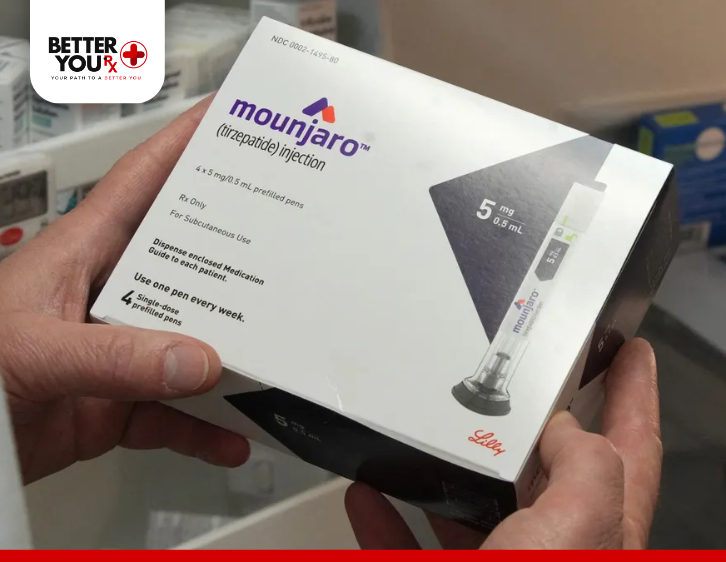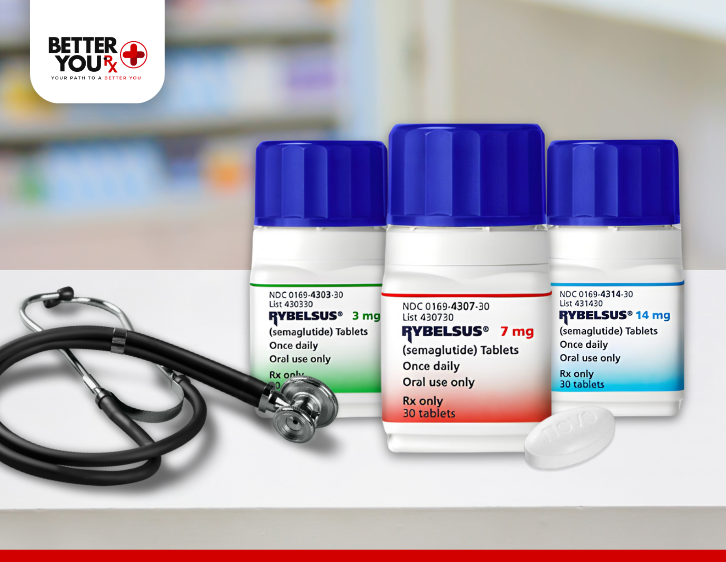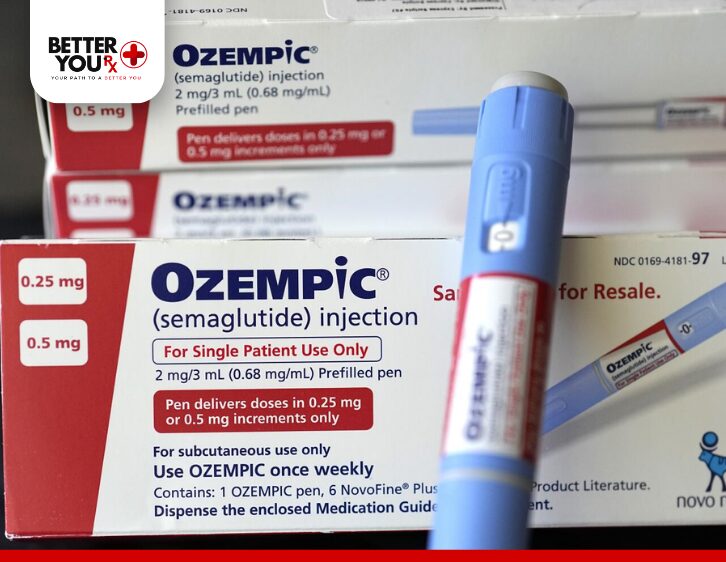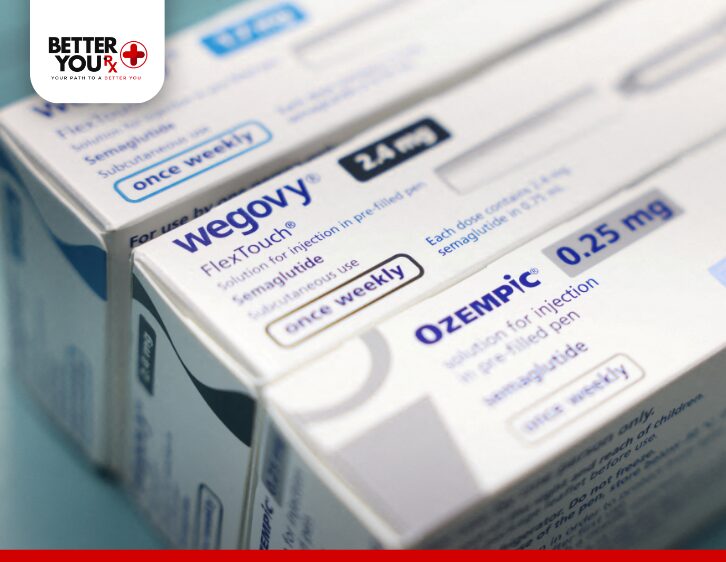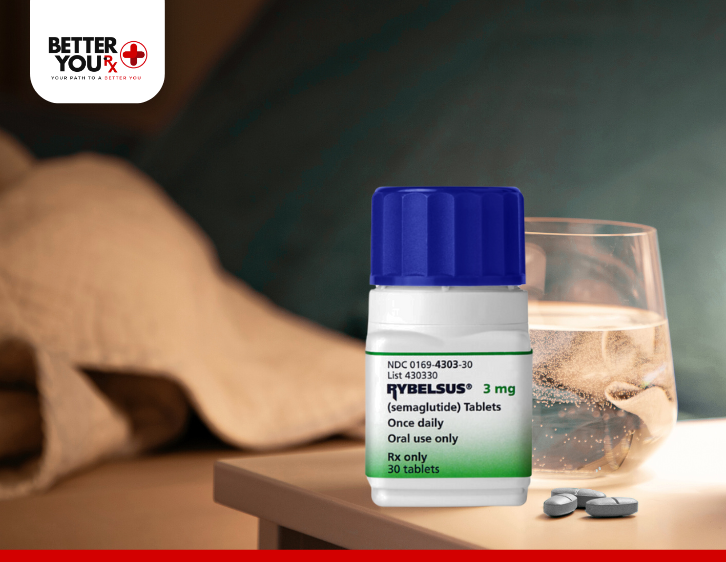Trulicity vs. Ozempic: Understanding the Key Differences for Type 2 Diabetes and Weight Loss
If you’re managing type 2 diabetes and looking for treatment options that also support weight loss, you’ve probably come across two popular medications: Trulicity (dulaglutide) and Ozempic (semaglutide). Both of these medications are part of a class of drugs known as GLP-1 receptor agonists, and they’re often prescribed to help control blood sugar levels. But how do they differ, and which one might be right for you? Let’s explore the key differences, including how they work, their benefits, side effects, and more.
What is Trulicity?

Trulicity, a once-weekly injectable medication, is designed to help individuals with type 2 diabetes manage their blood sugar levels. It works by stimulating the release of insulin, lowering glucagon levels (a hormone that raises blood sugar), and slowing down the digestive process. In addition to controlling blood sugar, Trulicity has also shown potential in supporting weight loss.
What is Ozempic?

Similar to Trulicity, Ozempic is also a GLP-1 receptor agonist, used to treat type 2 diabetes by promoting insulin production, regulating glucagon, and slowing digestion. One of the key differences is that Ozempic has gained significant attention for its effectiveness in promoting weight loss, making it a preferred option for many people managing both diabetes and obesity.
Comparing Dulaglutide (Trulicity) and Semaglutide (Ozempic)
While both Trulicity and Ozempic belong to the same class of medications, there are several differences worth noting.
Similarities Between Trulicity and Ozempic
- How They Work: Both Trulicity and Ozempic work by stimulating the release of insulin, reducing glucagon levels, and slowing digestion to lower blood sugar levels. These actions also help curb appetite, potentially aiding in weight loss.
- Heart Health Benefits: Both medications have shown heart health benefits. Ozempic may lower the risk of serious heart-related events, while Trulicity has demonstrated its ability to reduce the risk of heart issues, especially in individuals who are at higher risk.
- Convenience: One of the biggest advantages of both Trulicity and Ozempic is that they are both once-weekly injections, making them more convenient than medications that require daily or multiple doses.
Key Differences Between Trulicity and Ozempic
- Effectiveness: Studies have shown that Ozempic (semaglutide) generally outperforms Trulicity (dulaglutide) in both blood sugar control and weight loss. Many patients find that Ozempic offers more significant reductions in blood sugar levels and greater weight loss results.
- Side Effects and Adherence: Trulicity is often better tolerated by some patients, with fewer reported side effects compared to Ozempic. This might make it a better option for individuals who are concerned about tolerability or who have had trouble with side effects from other medications.
Trulicity vs. Ozempic for Weight Loss

While both medications are primarily used to manage diabetes, they can also promote weight loss. However, neither is specifically approved by the U.S. Health Authorities for weight loss alone, though they may be prescribed off-label for this purpose.
How Much Weight Can You Lose with Trulicity?
With Trulicity, individuals can expect to lose around 2 to 5 pounds on average. When combined with metformin, a medication used to control blood sugar, weight loss could increase to around 6 to 7 pounds. Higher doses of Trulicity may also lead to greater weight loss benefits.
How Much Weight Can You Lose with Ozempic?
Research shows that Ozempic can lead to more significant weight loss. In studies involving patients with type 2 diabetes, those on a maximum weekly dose of 2.0 mg of Ozempic lost an average of 14 pounds (6.3% of their body weight). However, when Ozempic is used specifically for obesity treatment (branded as Wegovy), the weight loss can be as much as 35 pounds (15% of body weight) over 15 months.
Trulicity vs. Ozempic: Side Effects

As with any medication, both Trulicity and Ozempic come with potential side effects. It’s essential to discuss these with your healthcare provider to determine the best option for you.
Side Effects of Trulicity:
- Stomach pain
- Upset stomach (indigestion)
- Diarrhea
- Loss of appetite
- Allergic reactions (hives, trouble breathing, swelling)
- Pancreatitis (inflammation of the pancreas)
Side Effects of Ozempic:
- Nausea
- Diarrhea
- Vomiting
- Low blood sugar (if used with other diabetes medications)
- Worsening of diabetic eye disease (rare)
Trulicity vs. Ozempic: Dosage
Both medications are administered via injection once a week, which makes them easier to use compared to medications that require daily doses. The starting doses and maximum dosages differ slightly between the two:
- Ozempic: Starting dose is 0.25 mg once weekly for 4 weeks, then typically increased to 0.5 mg. The maximum dose is 2.0 mg per week.
- Trulicity: Starting dose is 0.75 mg once weekly, with the possibility to increase to a maximum of 1.5 mg weekly.
Trulicity vs. Ozempic: Cost Considerations
The costs of Trulicity and Ozempic can vary, and often depend on insurance coverage. Both medications are several hundred dollars per month without insurance, though many insurance plans may cover the cost if prescribed for diabetes treatment. For weight loss purposes, insurance coverage may be more limited.
For those paying out of pocket, it’s worth exploring financial assistance programs or discussing with your healthcare provider about alternative options to help manage costs.
Switching from Trulicity to Ozempic (or Vice Versa)
You and your healthcare provider might decide to switch between Trulicity and Ozempic for various reasons, including blood sugar control, side effects, or weight loss goals. Typically, switching medications involves transitioning to the new medication right after finishing your current dose, though your doctor may adjust this depending on your individual situation.
Does Ozempic Work Better Than Trulicity?
Studies suggest that Ozempic is generally more effective than Trulicity for both blood sugar control and weight loss. However, the choice between these medications depends on your specific health goals, side effect tolerability, and other factors that your doctor can help you assess.
Which Medication Is Right for You?
Both Trulicity and Ozempic offer significant benefits for managing type 2 diabetes, and both have the potential for weight loss. The decision between the two should be based on factors such as:
- Your treatment goals
- Side effect tolerance
- Cost and insurance coverage
- How well you respond to each medication
Consulting with your healthcare provider will help you determine the best treatment option for your unique needs.
Final Thoughts
Whether you choose Trulicity or Ozempic, both medications offer an effective way to manage type 2 diabetes and support weight loss. Each has its strengths, with Ozempic typically being more effective for weight loss, while Trulicity may be easier to tolerate for some individuals. If you’re exploring options for managing type 2 diabetes or weight loss, it’s important to discuss these options with your healthcare provider to find the best fit for you.
At Better You Rx, we understand the challenges of managing diabetes and achieving weight loss goals. If you’re looking for affordable, reliable access to diabetes medications and other weight management solutions, explore our services as your trusted Canadian Pharmacy Affiliate partner. Visit us today for more information.


